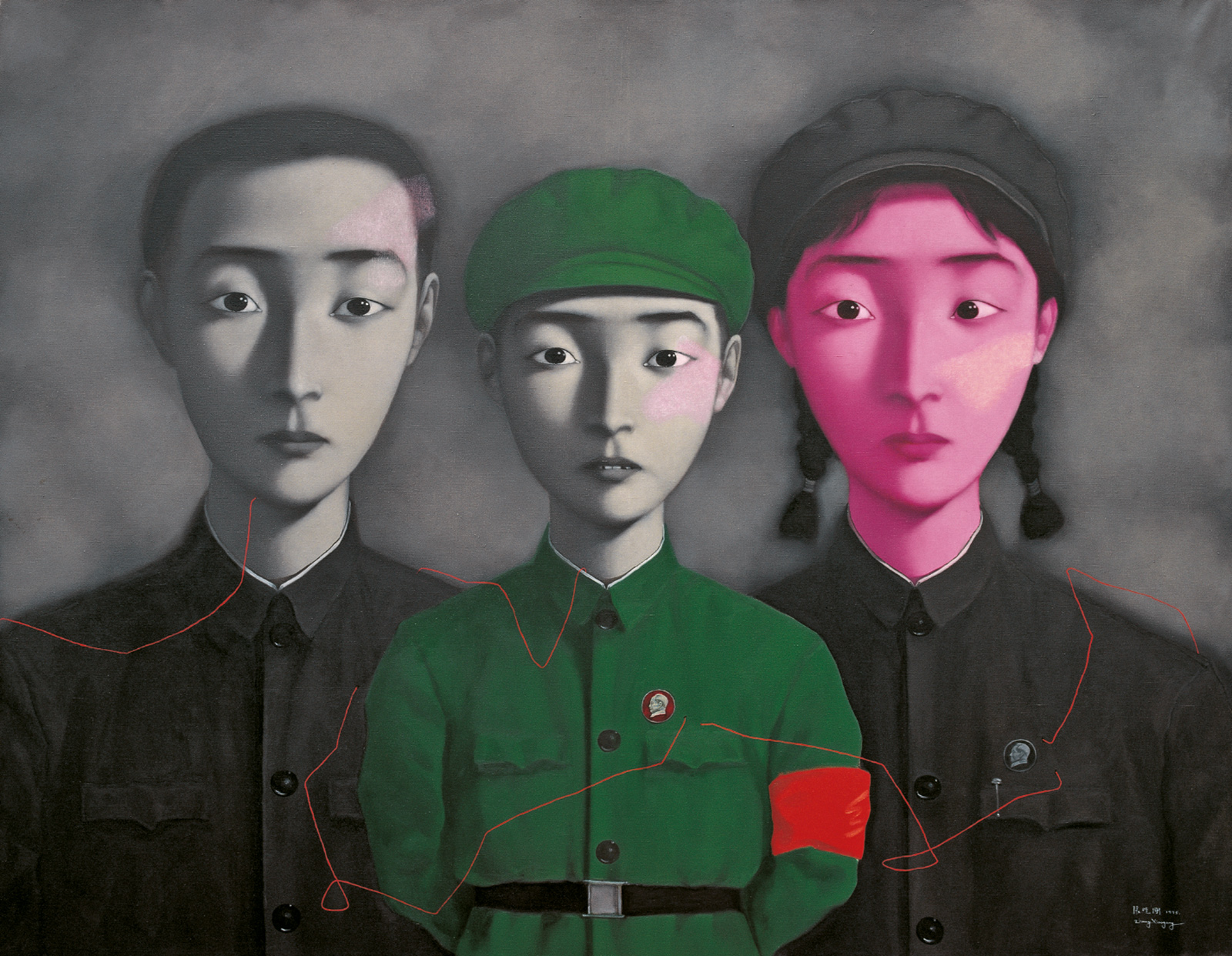In response to:
‘China’s Worst Policy Mistake’? from the April 7, 2016 issue
To the Editors:
Nicholas Kristof’s thoughtful review of two books about China’s one-child policy [“‘China’s Worst Policy Mistake?,’” NYR, April 7] is marred by his repetition of three myths: that Mao Zedong’s opposition prevented effective family-planning efforts until after his death, that declines in fertility prior to the launching of the one-child campaign in 1980 were achieved without coercion, and that the one-child policy averted perhaps 200 million births.
Mao at times stated that a large and growing population was an asset for China. However, at other times he argued that a national program to promote birth control was urgently needed. And Mao was still very much in command in 1970 when a dramatic switch from voluntary to mandatory and coercively enforced birth limits occurred. That campaign limited urban families to two births, and rural to three. Compliance was anything but voluntary, with most of the coercive enforcement techniques and abuses that became familiar after 1980 already common, and with rates of abortions, IUD insertions, and sterilizations all increasing substantially. Fertility rates dropped sharply, from six births per woman in 1970 to under three in 1979, but at great human cost.
As Kristof notes, most of the decline in birth rates from 1970 to the present occurred prior to the one-child policy. After 1980, and despite further sharp increases in coercion, birth rates initially fluctuated rather than declining. When a new decline began, with China falling below replacement fertility since the early 1990s, the primary cause was not the one-child policy, but rapid economic development, which drove similar fertility declines elsewhere in East Asia. It is not obvious how many births the one-child policy “averted,” but certainly many fewer than 200 million, not to mention the officially claimed 400 million.
I agree with Nicholas Kristof’s critical assessment of China’s one-child policy. There was no rational justification for that disastrous policy, which produced extensive human rights abuses. However, by repeating common myths, his review obscures an even more prolonged tragedy. The intense suffering produced by state-imposed birth limits continued for forty-five years, not thirty-five, under both Maoist socialism and reform-era quasi capitalism, and long after they ceased being effective in reducing birth rates. Even now, with the announcement of the lifting of the one-child policy in October 2015, as Kristof notes, it is unclear whether families who try to have a third child will face the same kind of official brutality that their counterparts did during the 1970s.
Detailed evidence for the statements in this letter will be found in the following article: Martin King Whyte, Wang Feng, and Yong Cai, “Challenging Myths about China’s One-Child Policy,” The China Journal, No. 74 (2015).
Martin K. Whyte
John Zwaanstra Professor of International Studies and Sociology, Emeritus
Harvard University
Cambridge, Massachusetts
To the Editors:
The one-child policy was indeed worse than a crime: fertility was already falling rapidly without coercion. But why does Nicholas Kristof treat China like an exception? The World Bank, UN Population Fund, International Planned Parenthood Federation (IPPF), and several Western aid agencies all pushed coercive population control. In India, Pakistan, Bangladesh, and Indonesia, international aid paid poor people if they accepted sterilization, and Western consultants advised denial of health care and education to those who refused. When Indira Gandhi suspended the constitution and sterilized eight million people in 1976–1977, the UN and the IPPF redoubled their support.
Western delegations arriving in China did not, therefore, worry about mobile IUD and sterilization teams, “incentives” and fines, and concerted pressure from Communist cadres. Senior IPPF and UN staff instead feared that making a one-child policy official would make it more difficult to defend to the media. The IPPF directed aid to a voluntary association. Twenty million Chinese “volunteers” came forward, led by active or retired government officials. The UN insisted its support was “technical.” But UN computers calculated the number of birth permits for each commune, and UN centers trained 70,000 personnel to back them up.
In 1983, after a particularly brutal crackdown, the UN awarded program chief Xinzhong Qian—a Soviet-trained People’s Liberation Army general—its first Population Award, complete with diploma, gold medal, and $12,500. Indira Gandhi was the co-winner. China’s program became less draconian, in part because couples could abort female fetuses. Here again, Westerners pitched in. General Electric’s first plant in China produced ultrasound machines.
After 1985, US law defunded family-planning organizations that participated in coercion. Their leaders therefore buried this history and insisted, for thirty years, that new abuses were rare and fleeting. Now the IPPF won’t even let scholars look at its archive. This moral failure has mortgaged their future: it enables pro-lifers to sow fear that they are pursuing the same hidden agenda, and pose as reproductive rights champions in the biggest nation in the world.
Advertisement
For Kristof, Westerners were just “blind to the brutality of China’s policy.” He actually credits Westerners—including himself—with uncovering the abuses. Apparently, our primitive brethren in the East only needed Western missionaries to help them see the light. Ignoring history in this way may not be the worst mistake. But in future sermons, Kristof should recall that it is a root cause of countless others.
Matthew Connelly
Professor of History
Columbia University
New York City
To the Editors:
Nick Kristof misses the points of both books he reviews on China’s one-child policy. Kay Ann Johnson’s fifteen years of research and hundreds of interviews, which Kristof appears to regard as narrowly focused, show plainly that if given a chance most Chinese have no negative feelings about girls, and when prevented from having a second child prefer to give the “black” baby to a friend or relative for adoption, and the adopters don’t care if the child is female or male. Providing “black” children for foreign adoption is essentially a money-making racket for the authorities. Mei Fong, on the other hand, repeats the old story that most Chinese prefer boys, when in fact her own statistics show the opposite, and near the end of her book she suggests that readers look at Professor Johnson’s work.
Jonathan Mirsky
London, England
Nicholas D. Kristof replies:
All three letter-writers raise valid points. Professor Whyte is an astute observer, and I agree with him that Mao was inconsistent on family-planning issues: Mao missed an opportunity in the 1950s to launch an effective national program, but I don’t mean to imply that he was consistently anti-contraception. Likewise, the number of births averted by the one-child policy was indeed probably less than 200 million, but there’s disagreement about how much less. Professor Whyte’s most substantive objection is that the “later, longer, fewer” birth control initiative in China in the 1970s was fundamentally coercive, and in that sense was similar to the one-child policy that followed it. That’s a fair point, but I perceive more discontinuity than Whyte does: I think the one-child policy after 1980 was conducted nationally with significantly greater coercion and brutality, and that was the perception of Chinese villagers I interviewed (that’s also why the number of births per woman fell markedly under the one-child policy).
Jonathan Mirsky correctly notes the evidence that the Chinese preference for boys is sometimes overstated: Johnson’s book rightly says that many Chinese families wanted a daughter, perhaps to balance a son, and that girls could easily have been absorbed through domestic adoption. But Mirsky goes too far in suggesting “no negative feelings” toward girls. This son preference, called zhong nan qing nu, is much discussed in China. One study found that 39,000 baby girls die each year because they get less access to food and health care than boys do. (As a family-planning official explained to me: “If a boy gets sick, the parents may send him to the hospital at once. But if a girl gets sick, the parents may say to themselves, ‘Well, let’s see how she is tomorrow.’”) It’s also noteworthy that Taiwan, out of Beijing’s political orbit but still subject to China’s cultural preference for boys, has long had a skewed sex ratio at birth, with 110 boys born to every 100 girls in 2003 (it has fallen since but is still skewed).
As for Professor Connelly (who wrote a 2008 book, Fatal Misconception, about the issues in his letter), he is right that India and other countries also engaged in coercive family planning in the 1970s, sometimes with the complicity of international aid groups. He is also correct that the United Nations Population Fund made a terrible mistake in 1983 by giving its population award to Qian Xinzhong, who had overseen China’s brutal crackdown on family planning. As I’ve written elsewhere, that was disgraceful.
But critics of family-planning organizations (including those in Congress today who cut the US donation to the UN Population Fund) carry this too far and cite this as evidence that the fund was pro-abortion in China; in fact, the fund later did lots of good and regularly urged the authorities to ease up on the one-child policy. It persuaded China to upgrade its standard IUD from a painful, failing one that cost four cents to make to one that was far more comfortable costing twenty-two cents, a huge advance for 60 million Chinese women that also averted 500,000 abortions a year.
So, yes, international aid groups including the UN Population Fund made mistakes but that should not be a reason to defund them today. As for ultrasound machines, Connelly is right that they were used (illegally) for sex-selective abortion, but do we really want to deny all Chinese patients ultrasound technology? Let’s proceed carefully, for as with everything having to do with China, the lesson is: It’s complicated.
Advertisement



